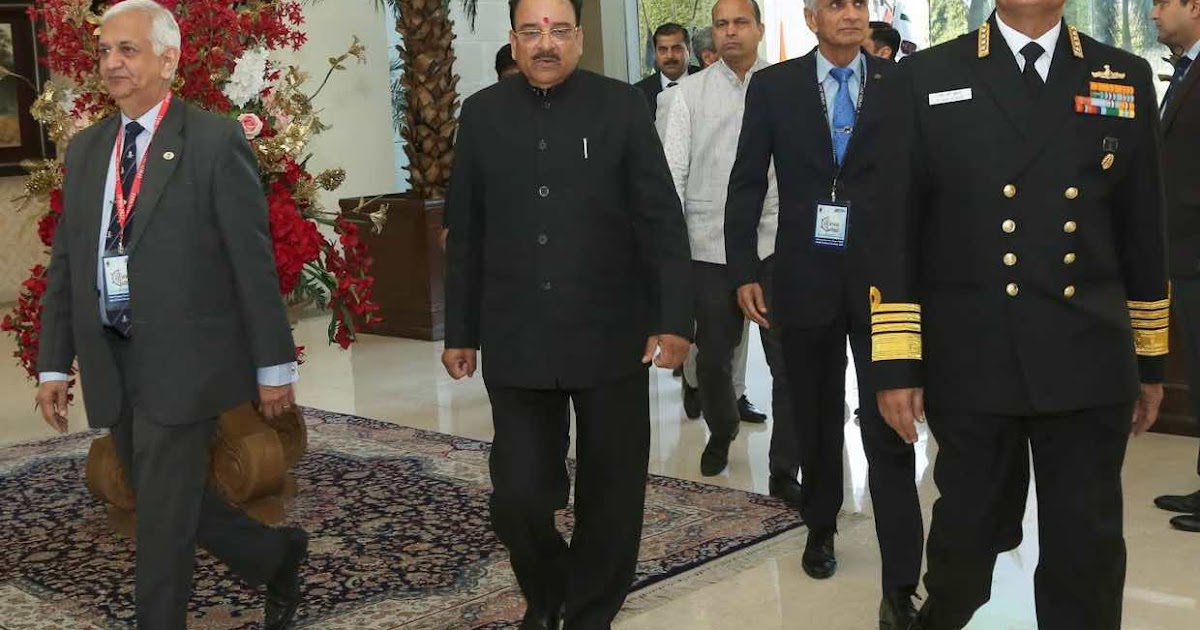
Navy Chief Admiral R Hari Kumar (right) flanked by Vice Admiral Pradeep Chauhan (left) marching for the opening of the Indo-Pacific Regional Dialogue (IPRD)
By Vikas Gupta
Defence News of India, 24 November 22
With the Chinese People’s Liberation Army (Navy), or PLA(N),Flexing its muscle in the Western Pacific and expanding its presence in Indian Ocean waters, the Indian Navy is responding by leading the creation of a new broad-based security architecture in the Indian Ocean Region (IOR).
During the 4th edition of the Indo-Pacific Regional Dialogue (IPRD) on Wednesday, Navy Chief Admiral R Hari Kumar proposed that the Indo-Pacific Oceans Initiative (IPOI), which Prime Minister Narendra Modi had launched in 2019, should now be operationalized.
This would mean activating one or more of the seven pillars of the IPOI, four of which have India as the lead: maritime security, disaster risk reduction, capacity building and trade connectivity and maritime transport.
“As a global and open initiative, the IPOI provides a level playing field for all stakeholders and respects their sovereignty and freedom of choice. The IPOI does not aim to create new institutions, but rather seeks to leverage existing mechanisms by drawing convergences and identifying areas of mutual interest,” Kumar said.
That India raises the proposal to put the IPOI into action was predictable from the theme of the conference: “Operationalizing the Indo-Pacific Oceans Initiative”.
The Indian Navy had already created a bunch of initiatives and structures to manage the Indian Ocean. These include the series of MILAN exercises (confluence) in 1995; IOR-ARC (Indian Ocean Rim – Association for Regional Cooperation) in 1997; IONS (Indian Ocean Naval Symposium) in 2008; IMAC (Information Management and Analysis Center) in 2014; and the IFC-IOR (Information Fusion Center for the Indian Ocean Region) in 2018.
“Speaking of the IPOI, in my opinion, it represents the broadest framework conceptualized so far in the Indo-Pacific. It is guided by India’s vision of the Indo-Pacific – meaning a “free, open, inclusive, peaceful and prosperous region”, the navy chief said.
New Delhi propagated US-led notions of a Free and Open Indo-Pacific (FOIP), freedom of navigation and overflight, and Modi’s personal initiative of security and growth for all in the region (SAGAR), which became a new Delhi Slogan in 2015. These were pursued through the multilateral bodies set up by the Indian Navy.
Taking action later, the Ministry of External Affairs (MEA) in New Delhi set up an Indo-Pacific wing in 2019, with the aim of integrating the various agencies under one Indo-Pacific umbrella. In 2020, the MEA went further by creating an Oceana division, which was responsible for the region from the Andaman Sea to the Western Pacific.
This largely coincides with the maritime space that Beijing calls the “first island chain” and seeks complete dominance, much like the United States did when, as an emerging superpower, it imposed the Monroe Doctrine in its neighborhood.
[ENDS]






